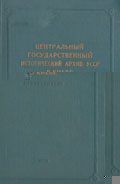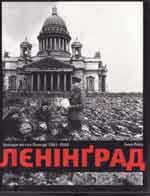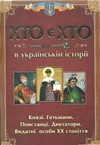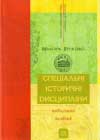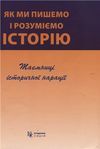Robert Darnton. George Washington`s false teeth
- Деталі
- Категорія: Книги
- Опубліковано: Неділя, 21 вересня 2014, 01:14
- Перегляди: 137
W.W. Norton. George Washington's False Teeth: An Unconventional Guide to the Eighteenth Century. - 2003. - 208 p.

INTRODUCTION
THE FATHER OF HIS COUNTRY FIGHTING TOOTHACHE? It was not the least of his battles, and he finally lost it. Having defeated the British and won the first election to the presidency, he was inaugurated in 1789 with one tooth in his mouth, a lower left bicuspid . If you know how to look, you can see the effects of his losses on the dental front by inspecting his portraits not the Gilbert Stuart on the dollar bill, or the famous Stuart of 1796 in which the artist packed cotton behind Washington's lips to make them look more natural, but the portrait of 1779 by Charles Willson Peale (see Figure I), which shows the scar on the caved -in area beneath his left cheekbone, the result, it seems, of a fistula from an abscessed tooth. Washington was worked over by all the best-known dentists of the country. He had a large collection of false teeth, made of everything from elephant ivory, walrus tusk, and hippopotamus tusk to the teeth of a fellow human. Nor was he alone in his war against tooth disease. His contemporaries probably worried more about the pain in their gums than about the new constitution in 1787. But they were an odd lot, if seen up close.
In fact, everything about the eighteenth century is strange, once you examine it in detail . The carriage of the marquis de Sade gets stuck in a traffic jam, and in a fit of road rage he runs his sword through a horse's belly. The chevalier d' Eon announces he is a woman and stages dueling matches in drag. Lafayette decorates his Paris town house with American Indians in native costume, while Marie-Antoinette dresses up as a milkmaid and manufactures a village in the gardens of Versailles. The eighteenth century is always adopting disguises and changing costumes.
It is also full of civic lessons. It makes declarations of independence in America, of the rights of man in France and it publishes treatises: The Spirit if the Laws, The Social Contract. But it adds strange twists to its apologies for liberty. Montesquieu takes cues from Machiavelli and imagines a revolution erupting from a harem . Rousseau draws on Hobbes in an attempt to bind democracy to the General Will. And Mirabeau invokes Rousseau in order to manipulate the Bourse. Visit the eighteenth century, and you will return with your head spinning, for it is endlessly surprising, inexhaustibly interesting, irresistibly strange.
The taste for strangeness does not suit the favorite flavors of history in the United States, but it could produce some positive effects, if only as an antidote to false historical consciousness. When the country faces catastrophe, Americans often turn to the Founding Fathers for help, as though we could open a direct line to the eighteenth century and tap a font of wisdom. During the debates about impeaching Presidents Nixon and Clinton, for example, we tried to find a way out of the crises by poring over every scrap of paper produced by the men who had sat in the Constitutional Convention. Yet they lived in a different world from ours. Open the correspondence between Jefferson and Madison, and you will stumble upon remarks like the following: "The earth belongs always to the living generation . . . . Every constitution then, and every law, naturally expires [sic] at the end of 19 years. If it be enforced longer, it is an act of force, and not of right."2 If we venture far enough into "the lost world of Thomas Jefferson," as Daniel Boorstin called it, we are likely to get lost ourselves.
This book provides a guide to the eighteenth century, not to all of it (that would require a multivolume treatise) but to some of its most curious, out-of-the-way corners and also to its main concern, the cause of the Enlightenment. I first imagined writing such a guidebook long ago while attempting to follow Jefferson through Paris. His trail led into the lives of Frenchmen who mixed an idealistic passion for America with bareknuckled politics in Grub , Street. One of them, Etienne Claviere, actually got caught in a punch-up on the Paris Bourse, and his speculations involved him simultaneously in projects to found a utopian colony in Ohio and in plots to bring down the government in Versailles. Another Americophile, Jacques-Pierre Brissot, turned up as a spy in the archives of the lieutenant general of police. The lines of inquiry opened onto so much unfamiliar territory that I finally decided to follow them instead of Jefferson and spent the next decades roaming around in the field of study known in France as the history of mentalities. The essays brought together here are field reports on that experience. But they do not wander all over the eighteenth-century map. They concentrate on four interrelated themes: French-American connections, life in the Republic of Letters, modes of communication, and ways of thought peculiar to the French Enlightenment.
Each of these themes offers a way into the remote mental world of the eighteenth century, but each also has some affinity with contemporary issues, and that poses a problem. "Thou shalt not commit anachronism" is the historian's first commandment. We may break it if we draw connections between the present and the past. The danger of "presentism," as it is sometimes called, is more insidious than it seems. Few historians sift through the past for moral lessons or imagine Washington as one of us, dressed up in period costume. But how can we see him except through our own eyes, looking back through our own time? Is there not a presentist bias built into the frame of our perception? And how can we get a direct view of him even when we contemplate the paintings of Gilbert Stuart and Charles Willson Peale? There is no unmediated access to the past.
Historians deal with this dilemma by embracing a professional ethos. They try to reconstruct the past "as it actually was," according to standards set by Ranke following Thucydides. But this commitment comes at a cost, for professional history tends to be esoteric, and professional historians often write for one another, cut off from the general public by a protective wall of erudition. This book is intended to break through that barrier. It is written for the general educated reader and is meant to provide historical perspective to current questions such as: Does the adoption of the euro challenge notions about the identity of Europe? Has the Internet created a new information society? Can the obsession with the private lives of public figures expose fault lines in political culture? By projecting those questions against an eighteenth-century background, I think it is possible to see them in a new light, while at the same time enjoying a fresh view of the eighteenth century.
That may sound like unashamed anachronism. I hope, however, to cope with the presentist element implicit in any picture of the past by acknowledging it and putting it up front. My argument is not that the eighteenth century was strange in itself Washington did not think it odd to be deprived of twenty-first-century dentistry but rather that it is strange to us. By confronting that strangeness, we can get to know it better. We also may be able to fight off a threat that comes from the opposite extreme, what the French call passeisme. An obsession with the past may distort it by magnifying everything that makes it peculiar and by blowing its peculiarities out of proportion. This sin goes under a different name among anthropologists: othering. For several years now they have issued warnings against attributing too much otherness to other cultures. To insist on the exotic uniqueness of another people may be to get them wrong in a way that puts them out of reach. Similarly, to make the past appear as too remote a foreign land may be to cut off access to it. Instead of reifying foreign cultures in the hope of capturing something imagined as their essence, we need to interrogate them . We need to learn to speak their languages, to put the right questions to the relevant sources, and to translate the answers back into an idiom that can be understood by our contemporaries.
If you put that program into practice, you cannot avoid a confrontation with your own subjectivity. History, like anthropology, has shifted to a self-reflective mode, but it need not succumb to egocentricity any more than to ethnocentricity, as I hope these essays show. Some of them are written in the first person singular, which used to be taboo among professionals who tried to create an illusion of objectivity by maintaining a proper rhetorical distance between their subjects and themselves. Rather than deny subjectivity, I am trying in this book to honor a second commandment, "Thou shalt not other," even though it cuts against the first. I see no easy way around the double danger of passeisme and presentism, except to shuttle back and forth across the centuries, looking for fresh perspectives. But that, as I understand it, is the value of history: not to teach lessons but to provide perspective.
It also gives pleasure, especially for those who commute to the eighteenth century. The age of the Founding Fathers had serious business before it, but it also had fun. It cocked snooks, cut rugs, lowered booms, and pursued happiness of every variety. Unfortunately, however, it also had bad teeth. Anyone who roams around in the eighteenth century keeps coming up against toothache. The most famous character in eighteenth-century Paris, aside from the public hangman, was Le Grand Thomas, a tooth puller who operated on the Pont-Neuf and cut quite a figure according to a contemporary description of him :
He could be recognized from a great distance by his gigantic size and the amplitude of his clothing. Mounted on a steel cart, his head held high and covered in brilliant plumes, he . . . made his virile voice boom out to both ends of the bridge and both sides of the Seine. He was surrounded by a trusting public; toothaches seemed to expire at his feet. His zealous admirers, like an inexhaustible flood, crowded around him and never took their eyes off him . Hands lifted in the air, imploring his remedies, and doctors could be seen scuttling away along the sidewalk, raging inwardly with jealousy at his success.
Most of us today don't bother much about our teeth, except for the occasional qUick fix at our dentist. If we listened to the eighteenth century, we would hear humanity grinding its teeth, such as they were, in a constant struggle against pain. Not even the king was immune. The doctors of Louis XIV broke his jaw trying to extract rotten molars. And the cult of Washington owes a good deal to his dentures. My own dentist assures me that the false teeth of the Founding Father show up everywhere in dentistry textbooks and that jokes about them are standard fare in dental schools. For example:
Dental student A: W hy does George Washington look so pained on the dollar bill? Dental student B: Wooden dentures. Dental student A: No, it's because he didn't make it to the twenty-dollar bill.
Did Washington really wear false teeth made of wood? I thought I saw them long ago at Mount Vernon, but Mount Vernon now has a Web page, which warns that the wooden teeth are a myth. Perhaps I should have extracted them from chapter I and also from chapter 4, where they briefly reappear but I have left them there nonetheless, because they belong to the mythical dimension of history, which is another subject of this book. Myths shaped mentalities, and they too can be found in strange places, like eighteenthcentury salons, where they provided Condorcet with material for imagining himself as a bourgeois de New Haven and Brissot with an opportunity to pursue exotic Americans in Paris not just Lafayette and his Indians but Hector Saint John de Crevecoeur, the Norman turned American farmer who passed as an expert on noble savages.
The Web itself is surrounded by a myth, the notion that it ushered in a new phase of history, "the information age." In this respect as well, the eighteenth century offers an opportunity for us to sharpen our historical consciousness, for it too was an age of information with media of its own, and they transmitted messages that can still be picked up from the surviving documentation. On a good day in the archives, one can even piece together parts of the communication system through which they flowed. That historical task coincides with the general goal of this book: to open up lines of communication with the eighteenth century and, by following them to their sources, to understand the century "as it actually was," in all its strangeness. • ,
Коментарі

